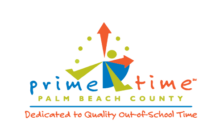9:00 am - 11:00 am
It was a great experience, I learned a lot. It gave me the opportunity to see some areas where I need to work to better my leadership and my program!
Lorena DAfterschool Professional
Raising the Cultural Vibration in OST – VIRTUAL
Are the youth in your program polite, well-behaved and cooperative? Do you sometimes struggle with behavioral issues and maybe even conflict? Many times, we treat the symptom of the problem; we take action for bad behavior by implementing punishment or negative reinforcement. However, what if there was an alternative way to address these problems? By creating a culture of high expectations and positive community, we can shape behavior before it becomes an issue. Come and learn techniques to build an environment that supports positive behavior by raising the cultural vibration in OST.
Upon successful completion of this training, the participant will earn 2 clock hours (.2 CEUs) of training.
Training Objectives:
Participants will:
- Define culture as it relates to the out-of-school time program space.
- List three ways to improve the culture of the out-of-school environment.
- Apply specific techniques to support positive behavior in your program.
Core Knowledge, Skills, and Competencies Addressed (CKSCs):
LEARNING ENVIRONMENTS AND CURRICULUM
Physical Environment and Activities
Apply – D. Creates engaging, physically, emotionally safe, and inclusive environments to encourage play, exploration, and learning across developmental domains.
Apply – E. Uses equipment, devices, and technology to support teaching and learning.
Apply – F. Uses various culturally responsive practices, tools, and accommodations – including individualization and differentiation — to meet individual needs and enhance learning.
Physical, Social/Emotional, and Cognitive Development
Apply – C. Models healthy interactions and guides children and youth in self-awareness, social awareness, relationships, and responsible decision making.
RELATIONSHIPS AND INTERACTIONS WITH CHILDREN AND YOUTH
Individual Child/Youth Guidance
Identify – A. Understands behavior is a type of communication – a way to express or exchange ideas, thoughts, or feelings with others.
Identify – D. Identifies individual child/youth abilities and corresponding positive guidance techniques.
Apply – A. Provides a supportive environment in which children and youth can learn and practice pro-social behaviors.
Enhancing Group Experiences
Identify – A. Recognizes the impact of group dynamics on learning and development and that working with groups is different from working with individuals.
Apply – C. Plans and guides group activities to teach children and youth cooperation and collaboration.
Primary QIS Scales Addressed
I. Safe Environment
I-E. Creating Safe Spaces
III-K. Sense of Belonging

